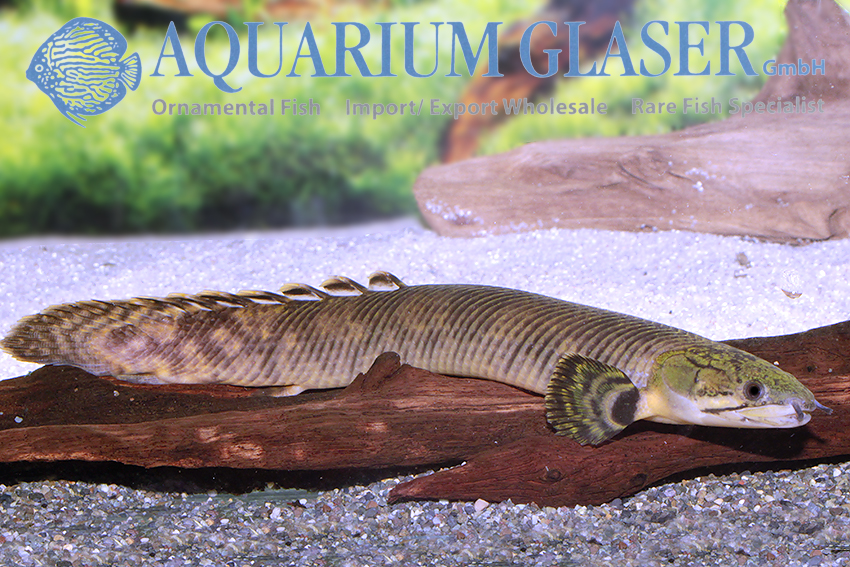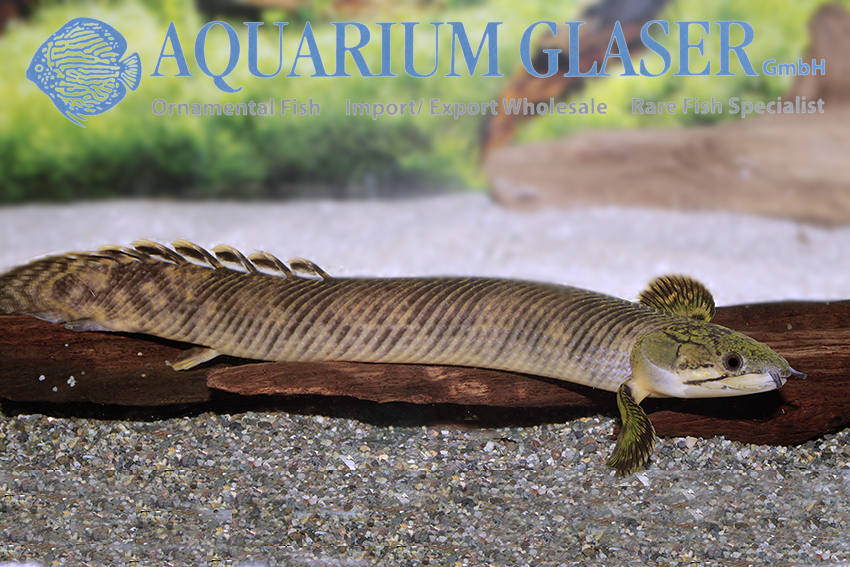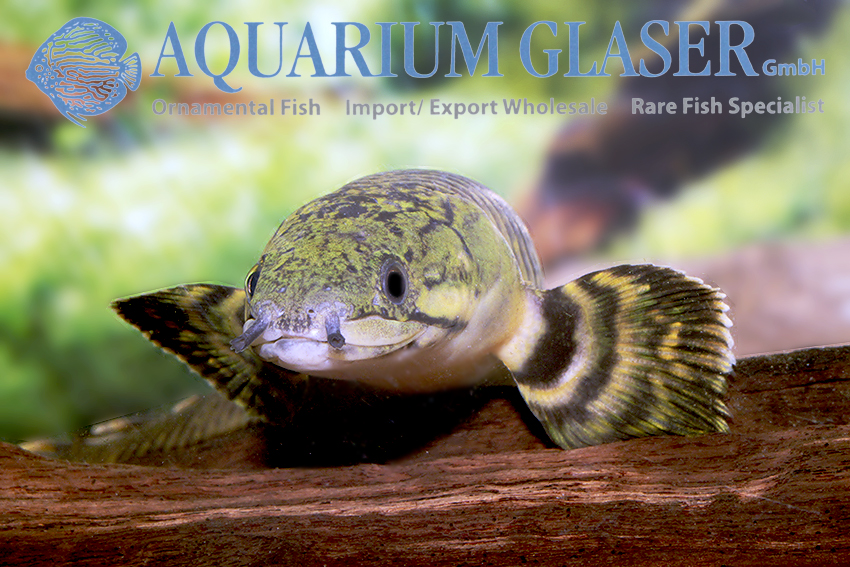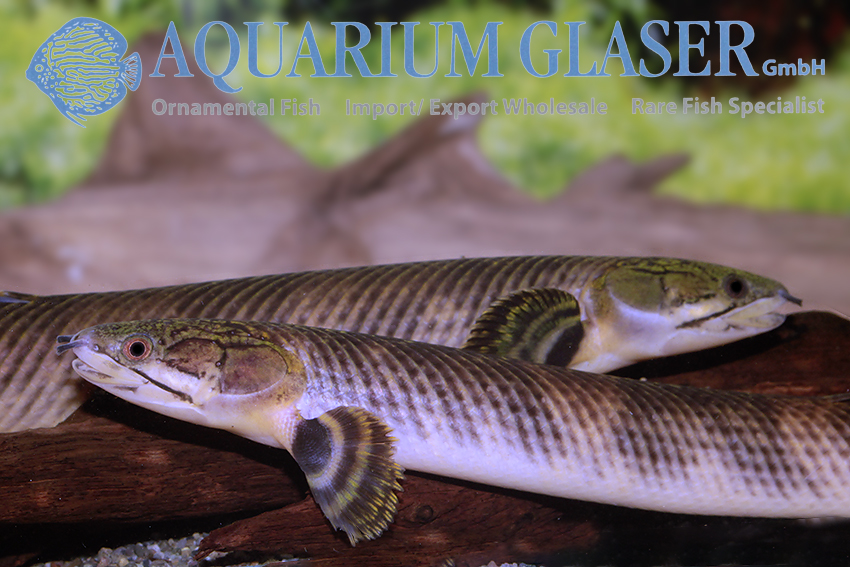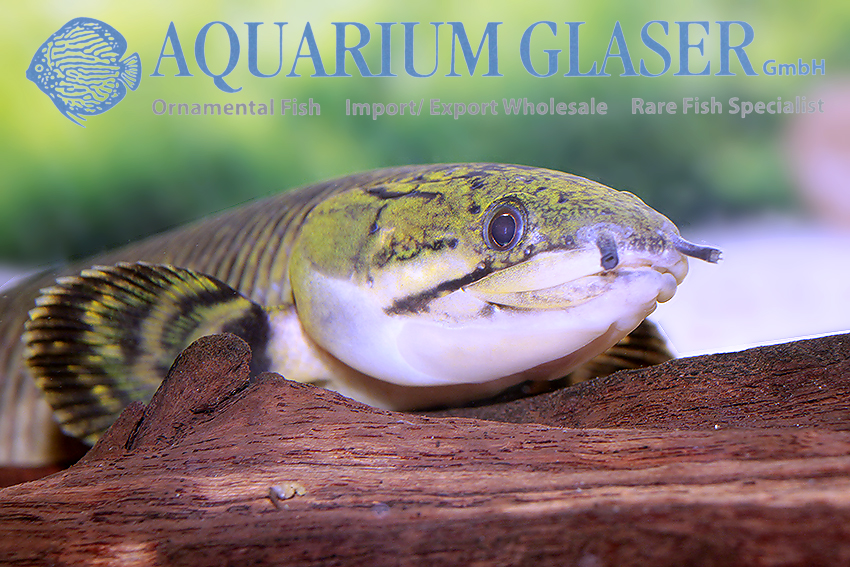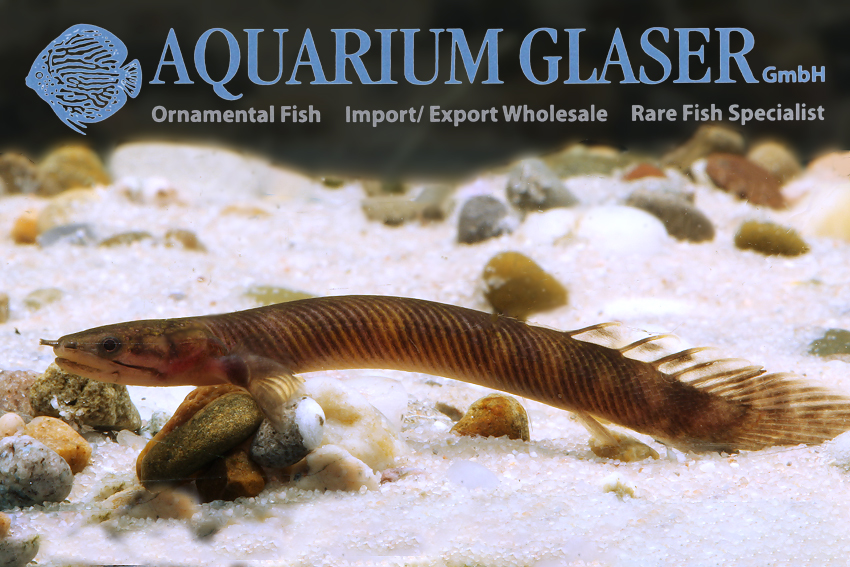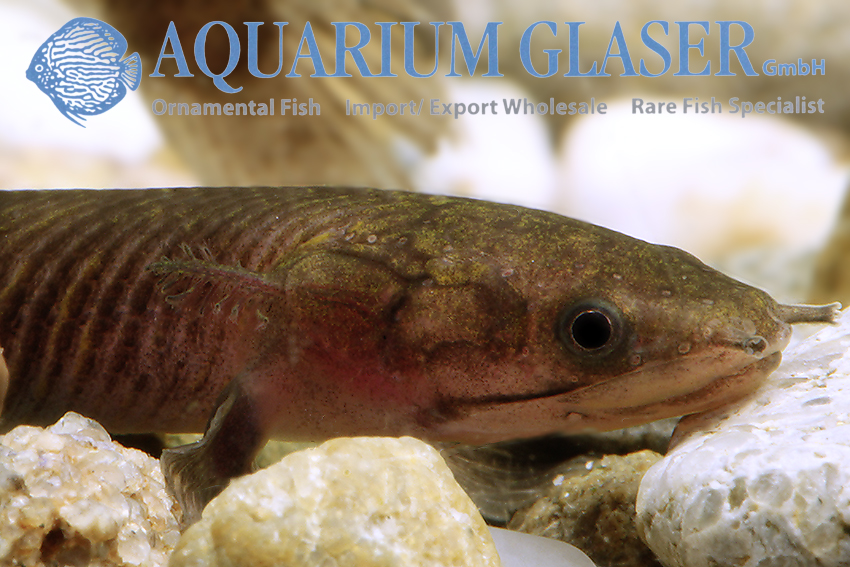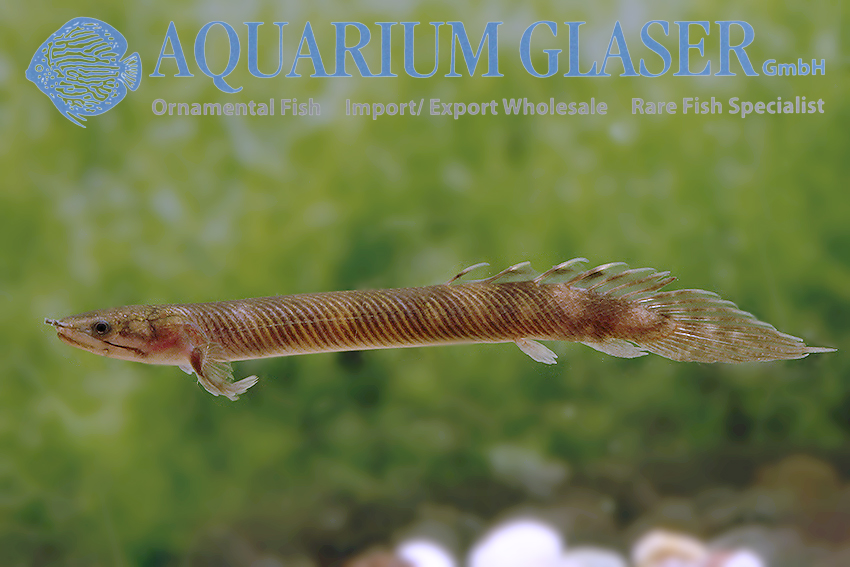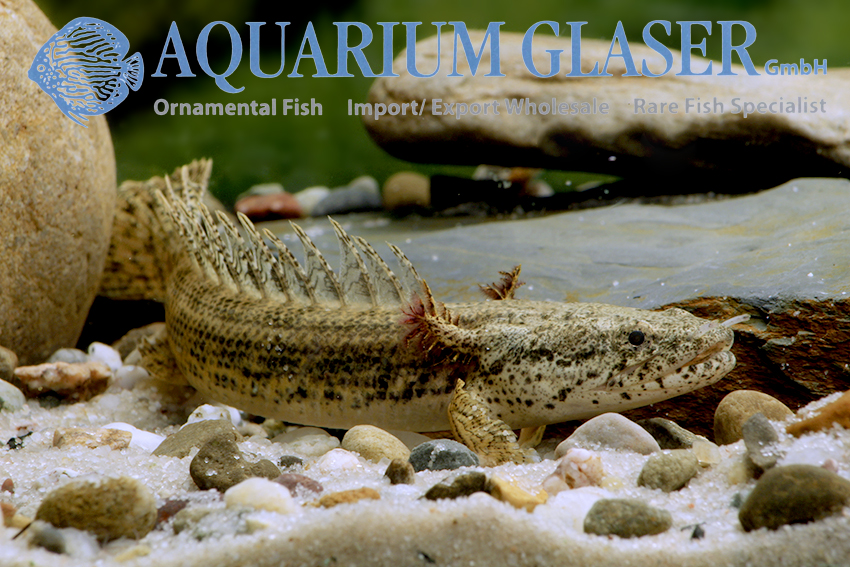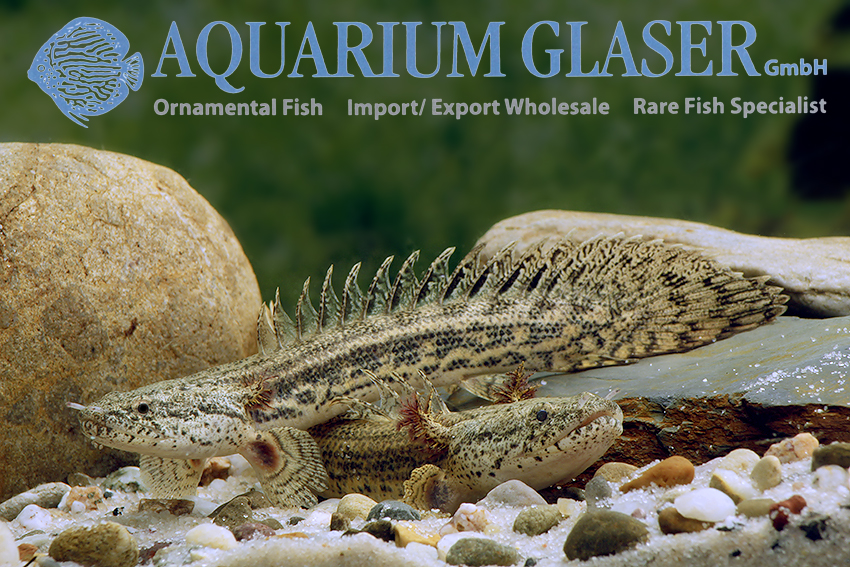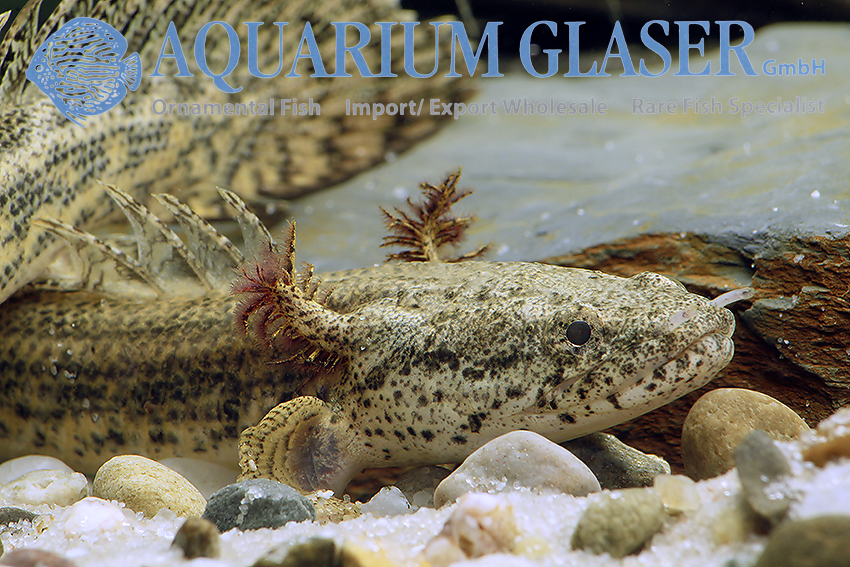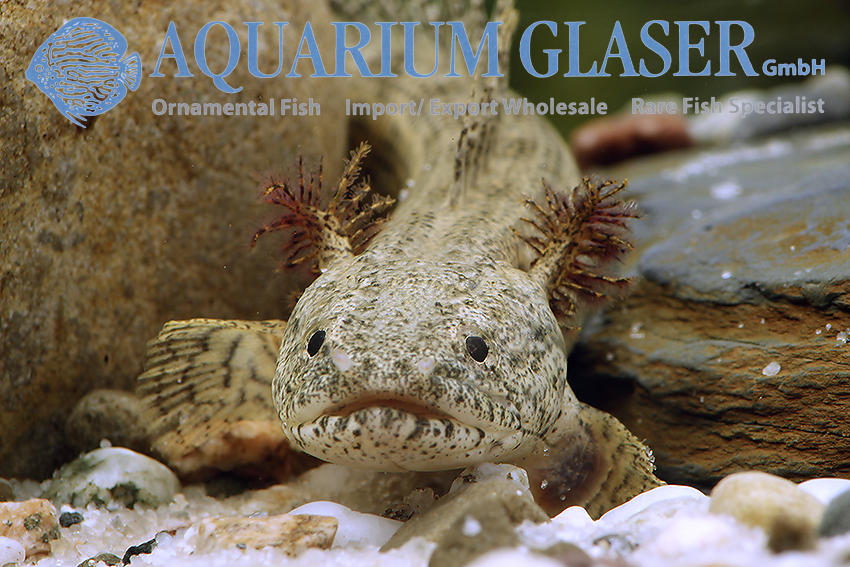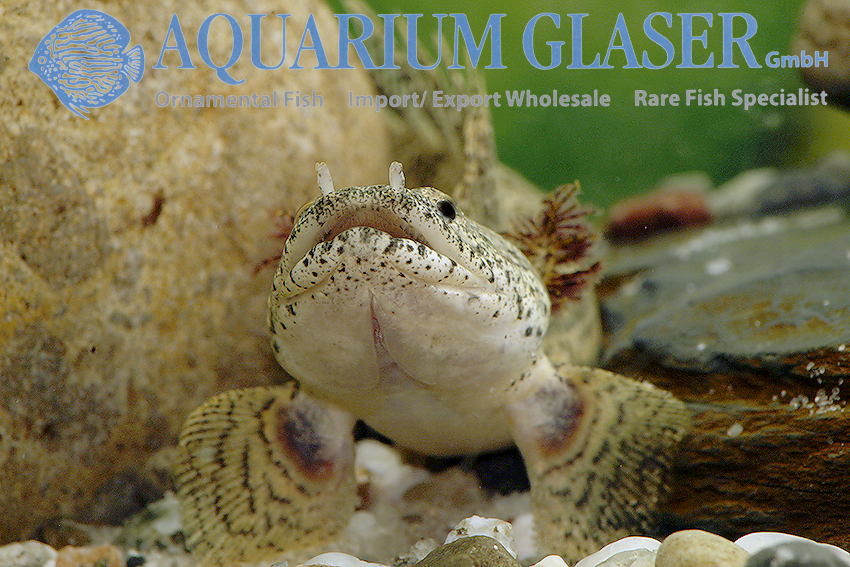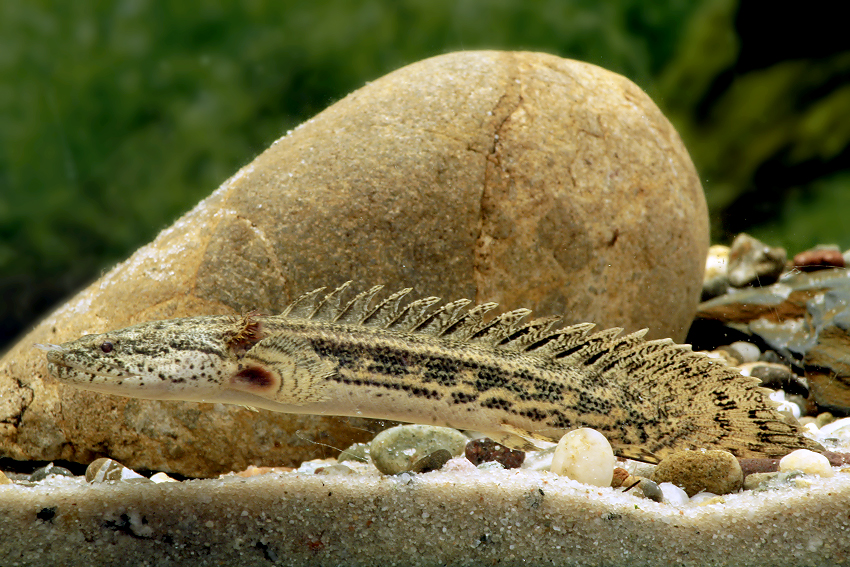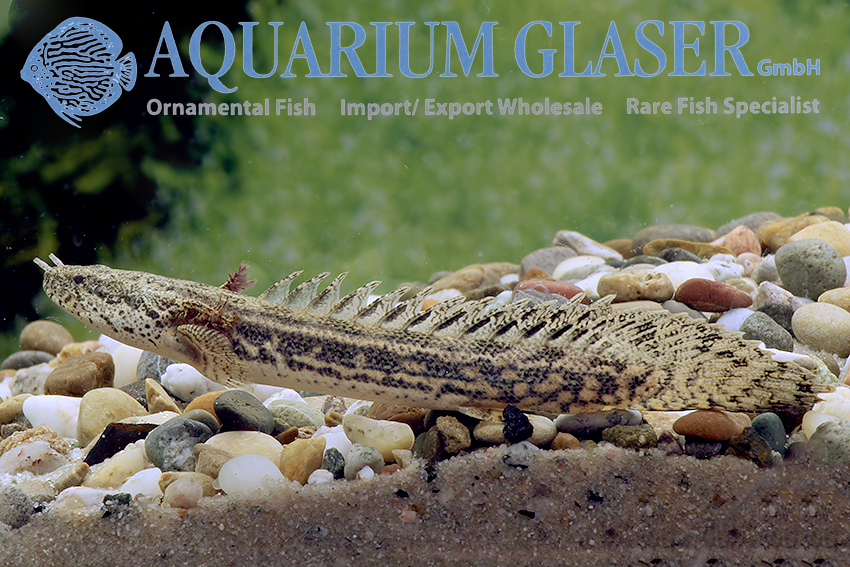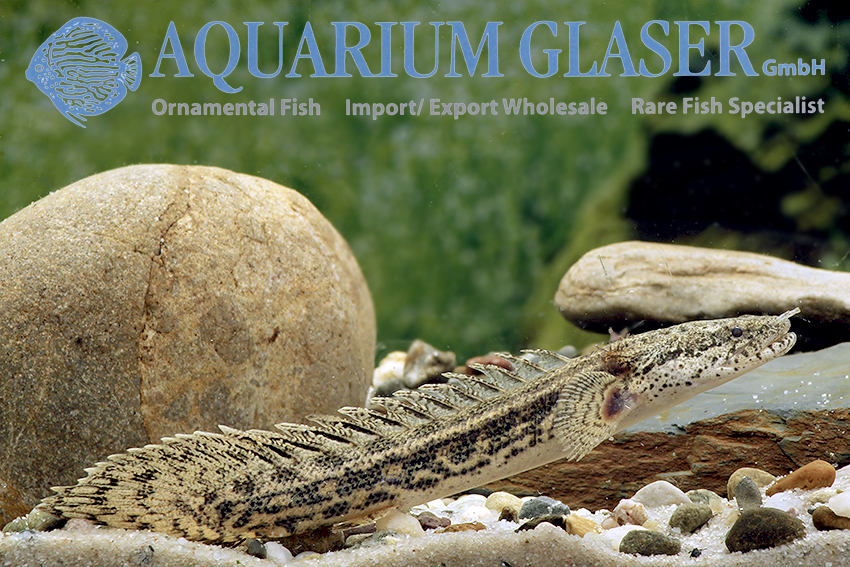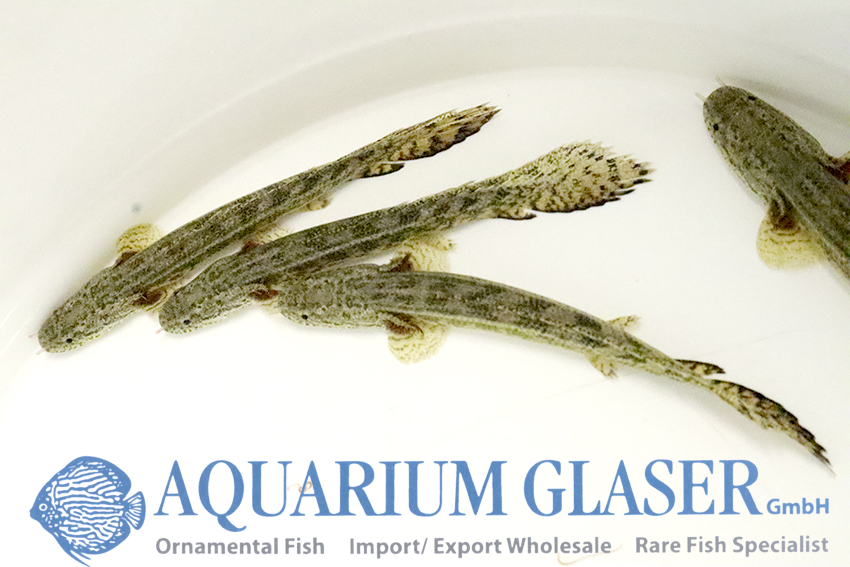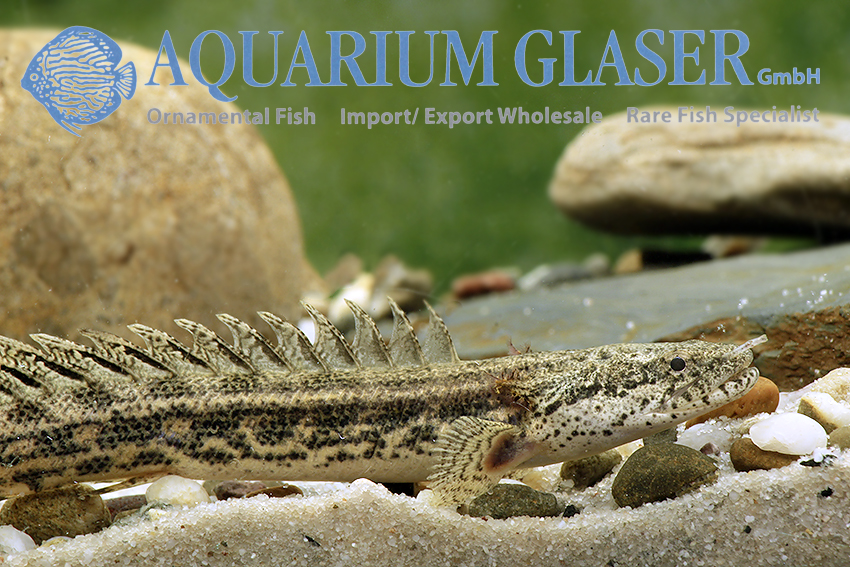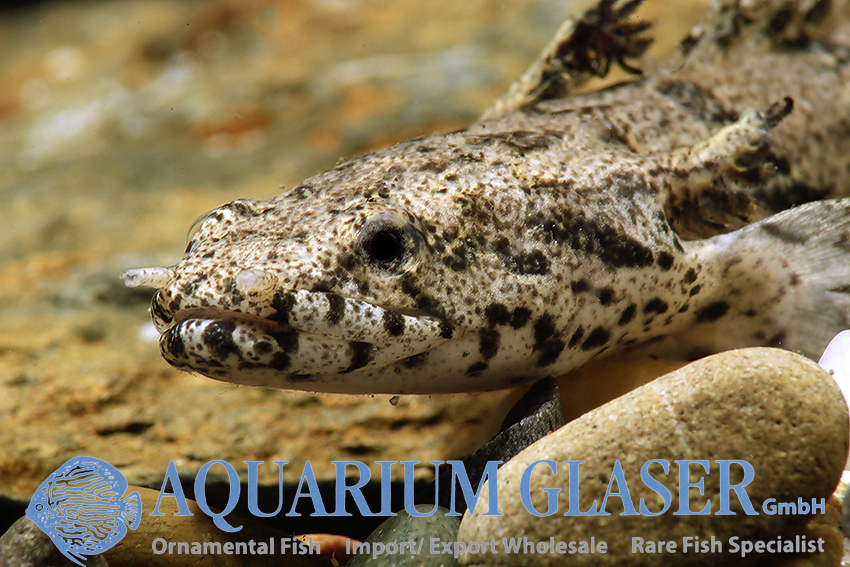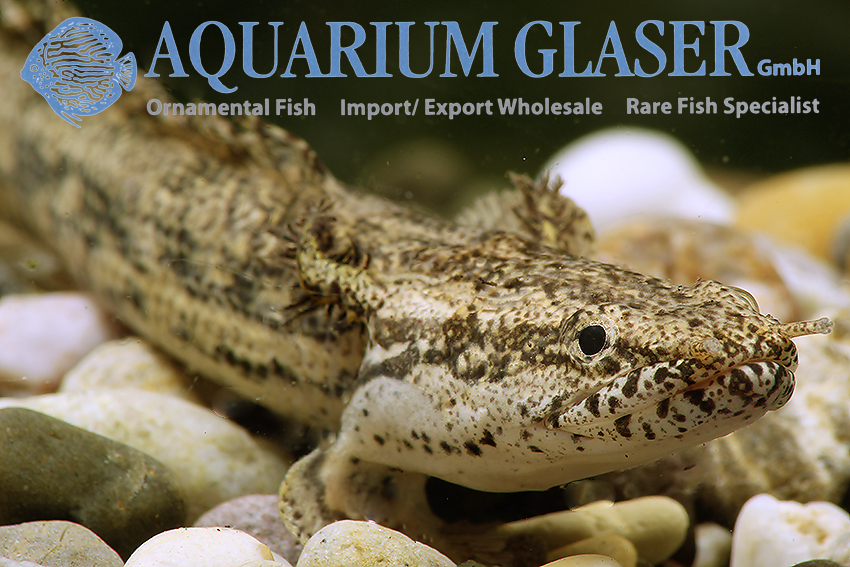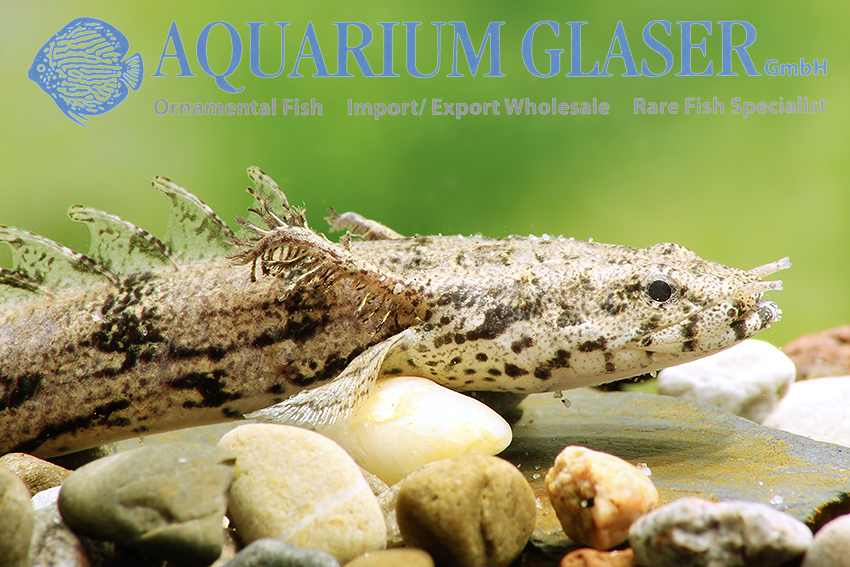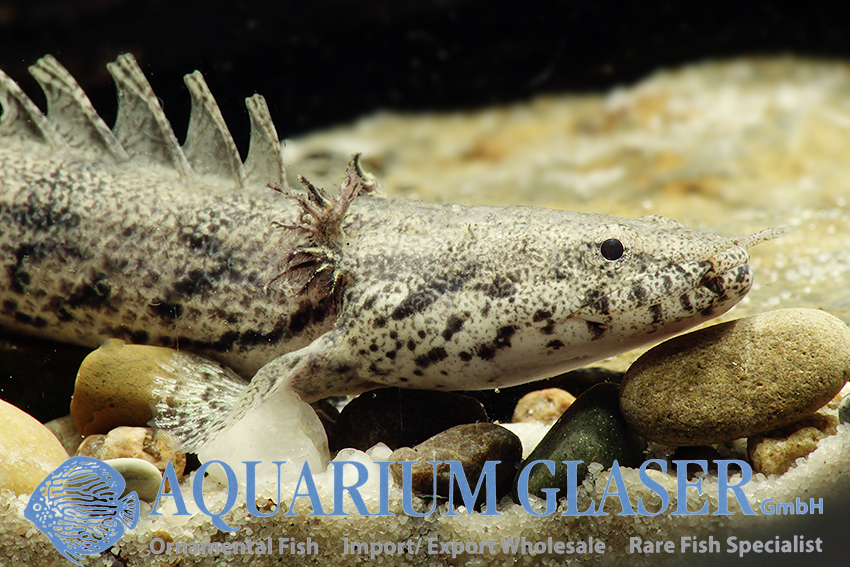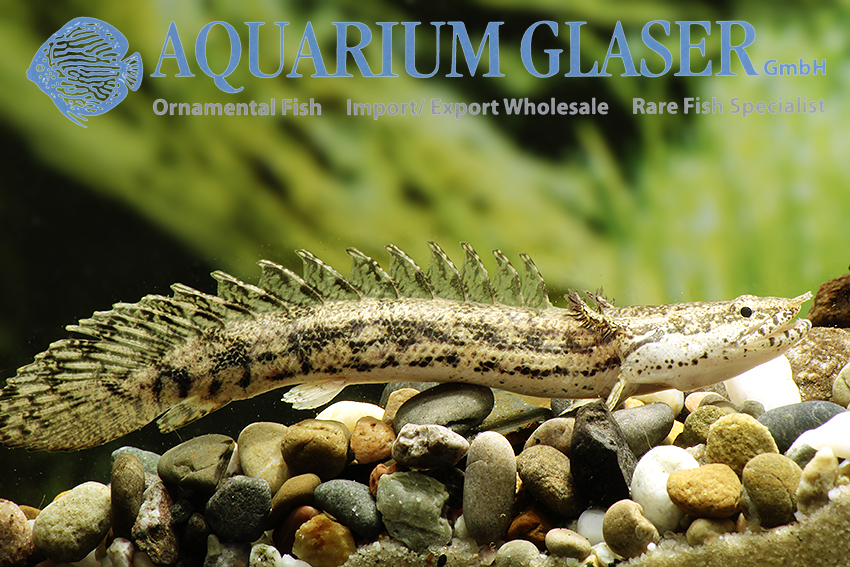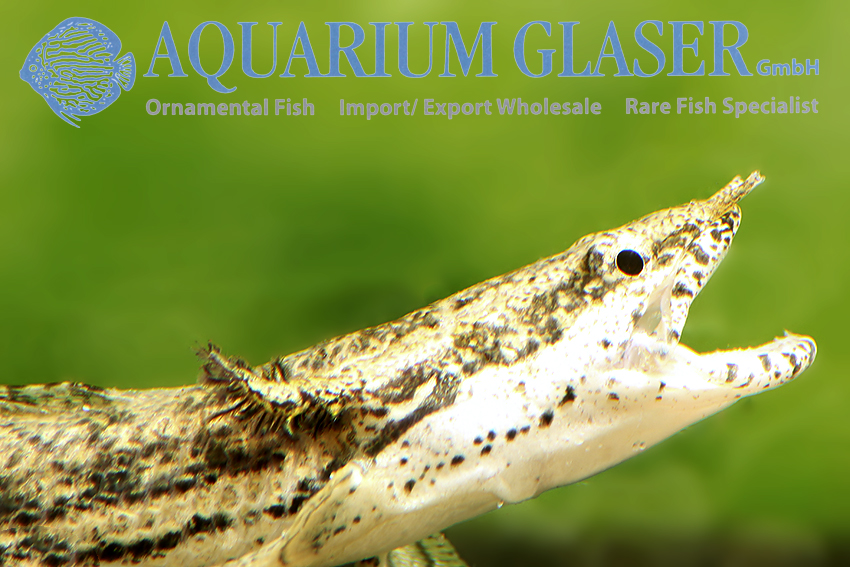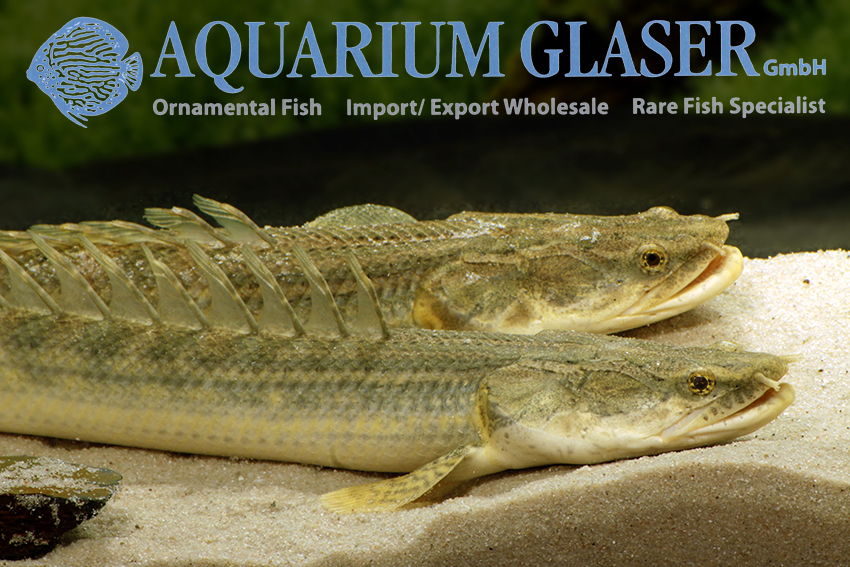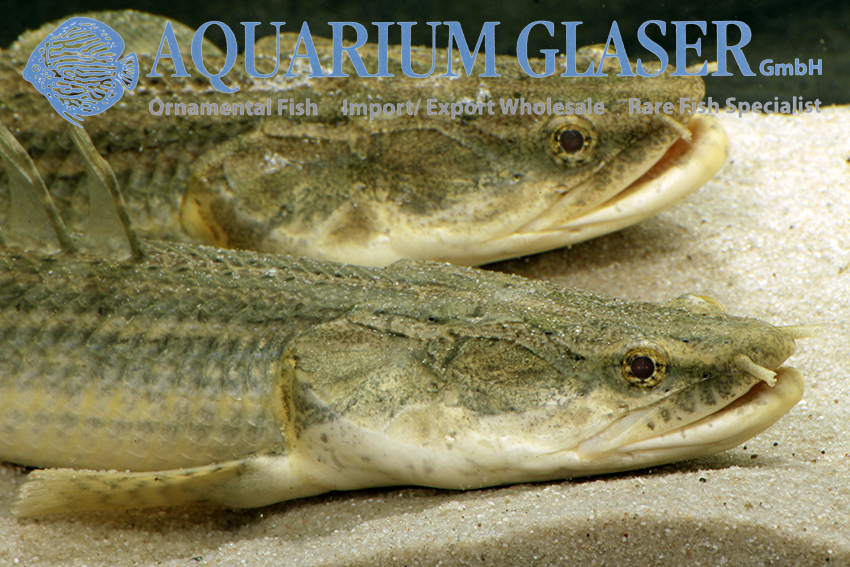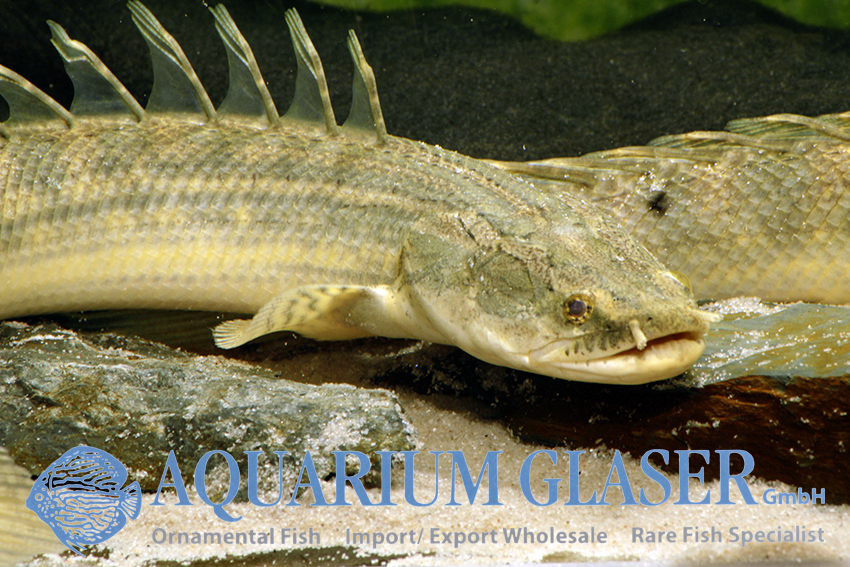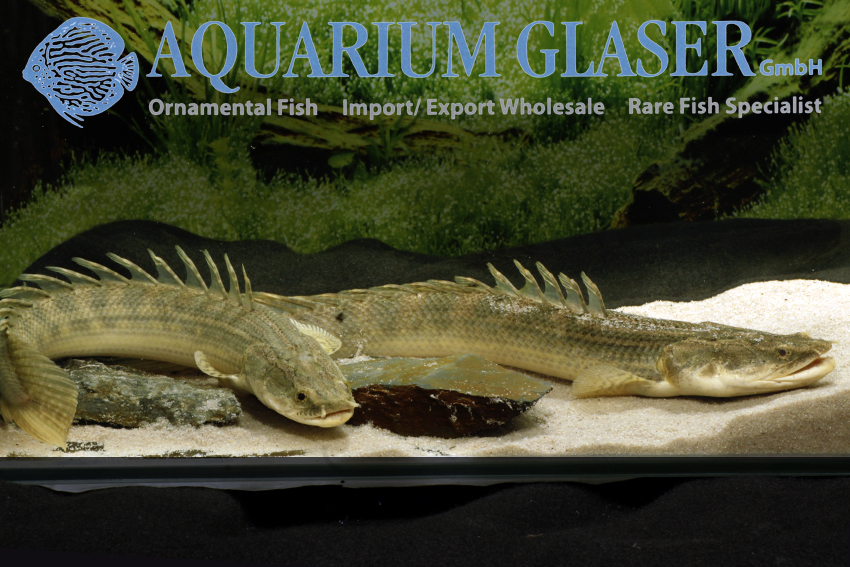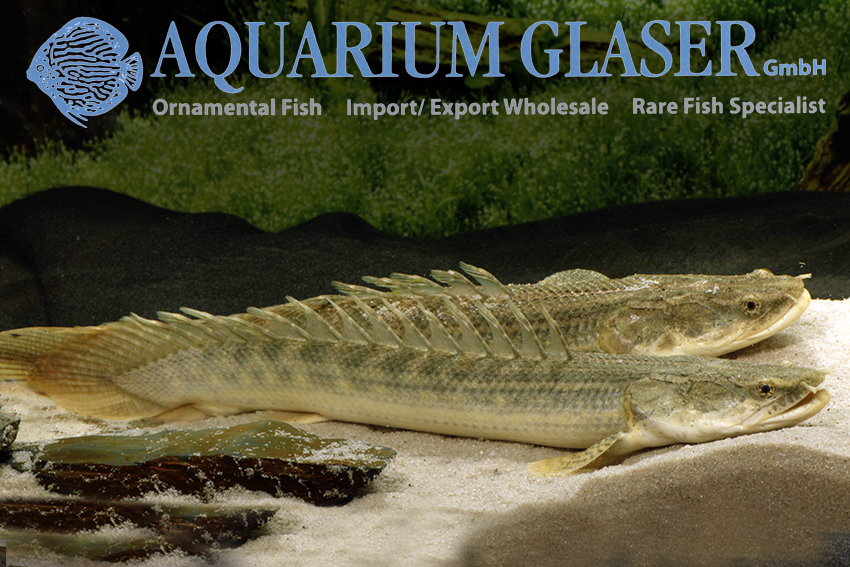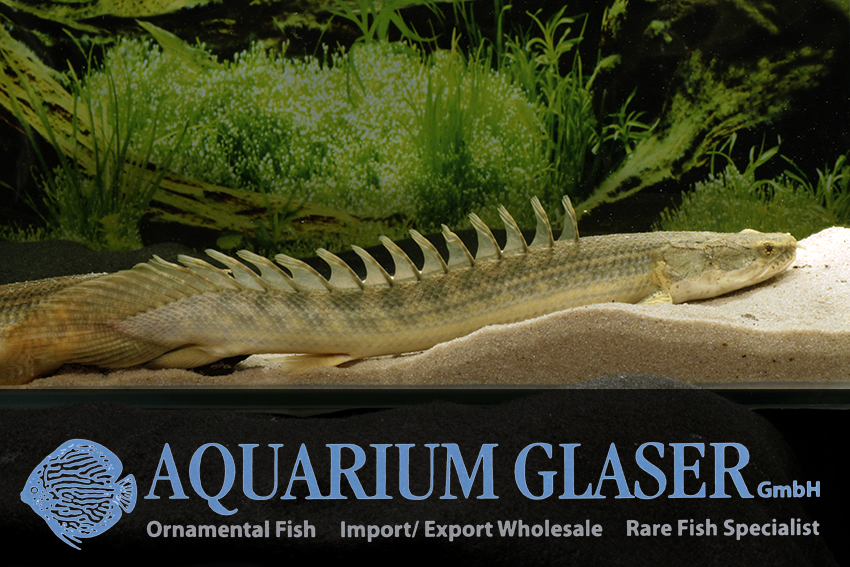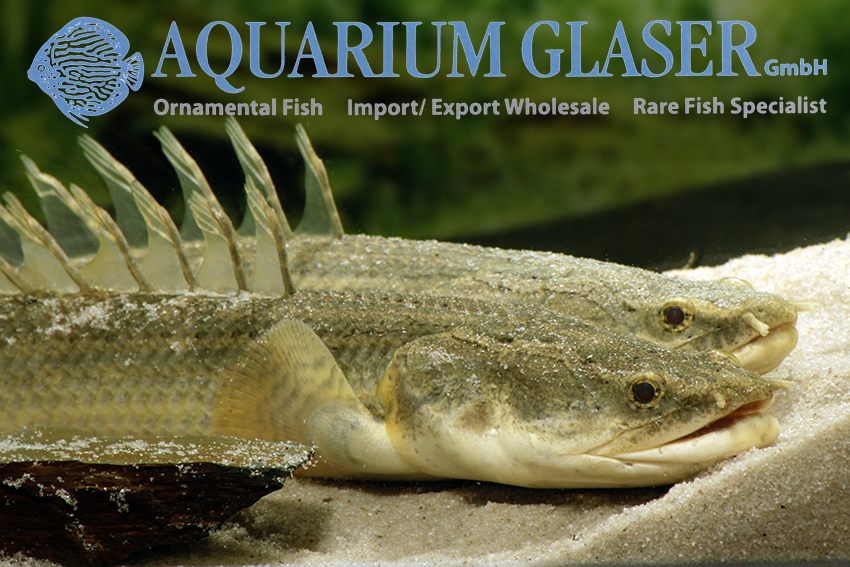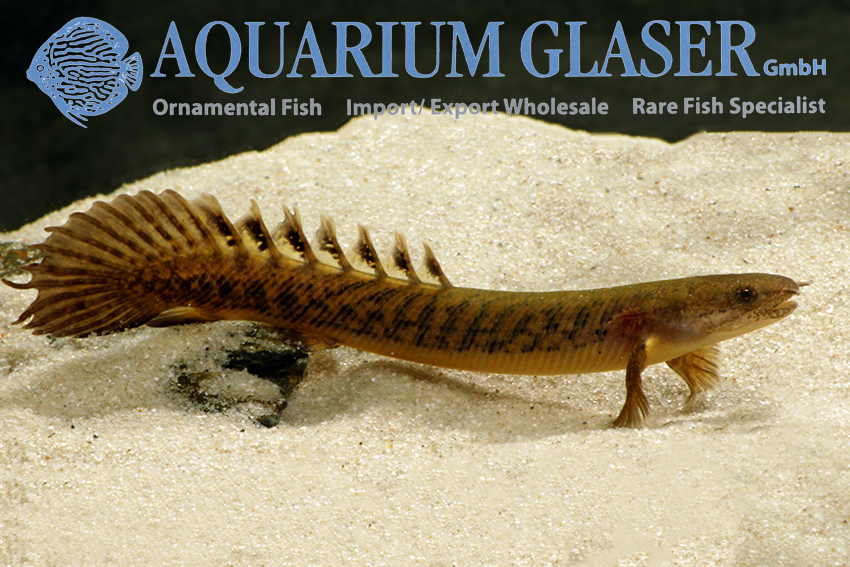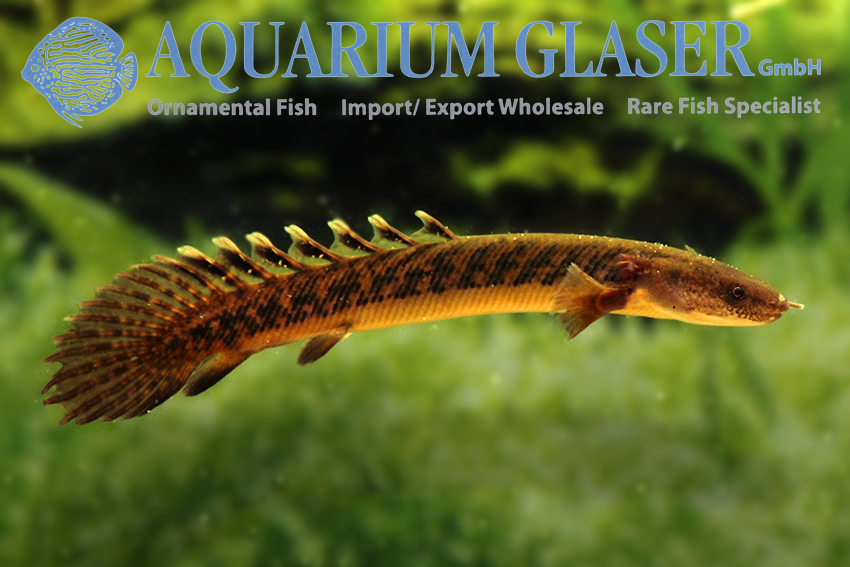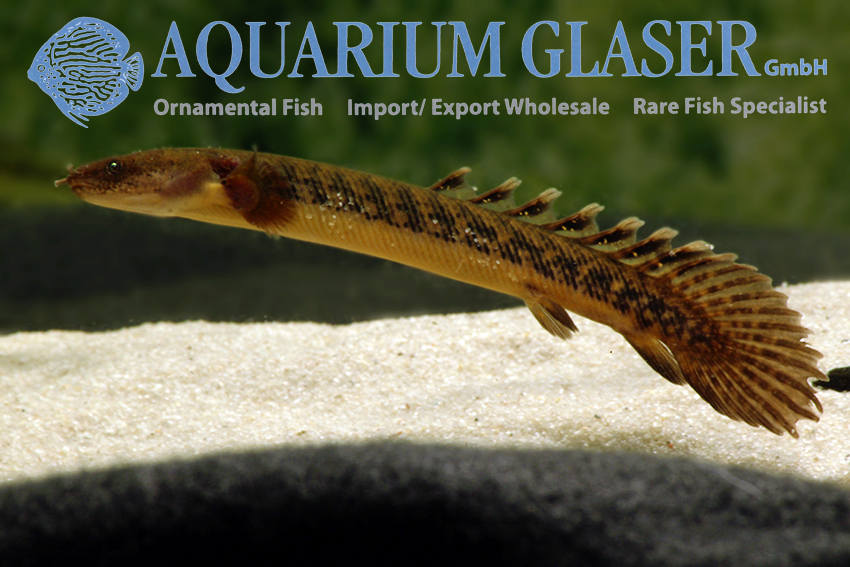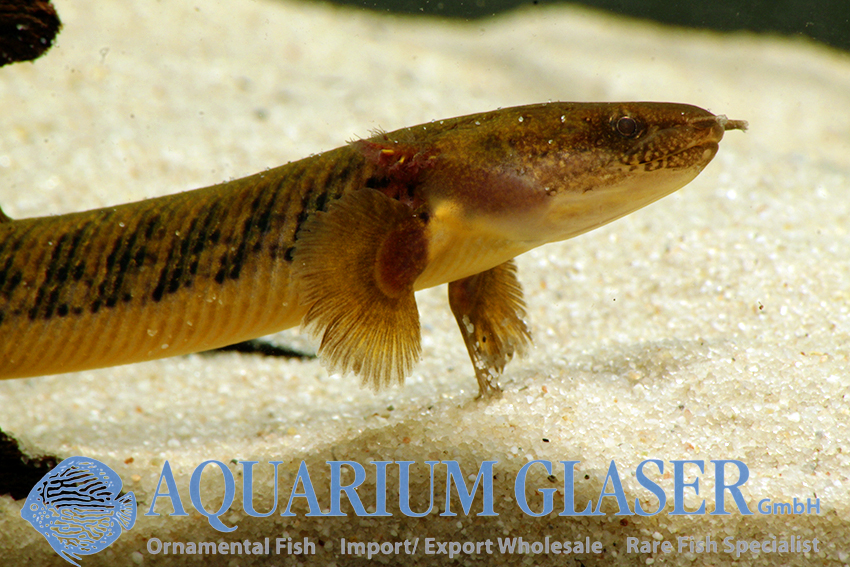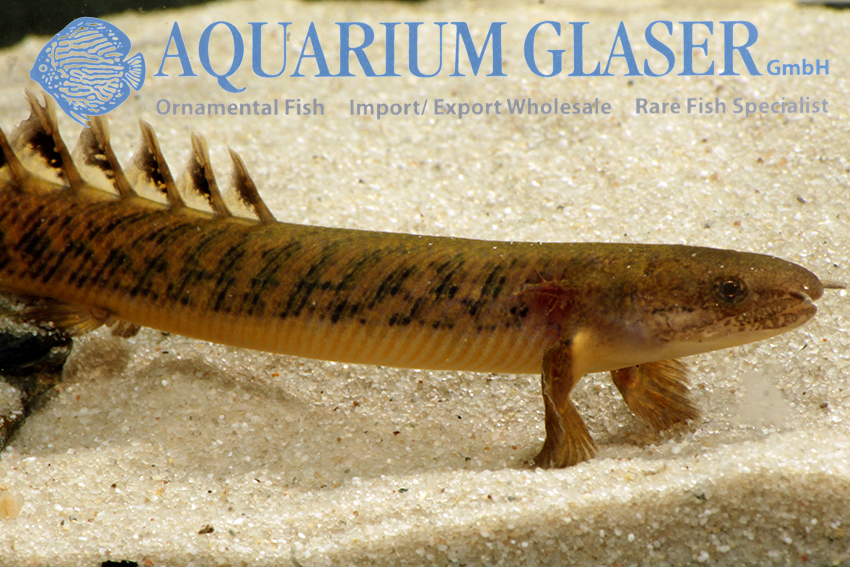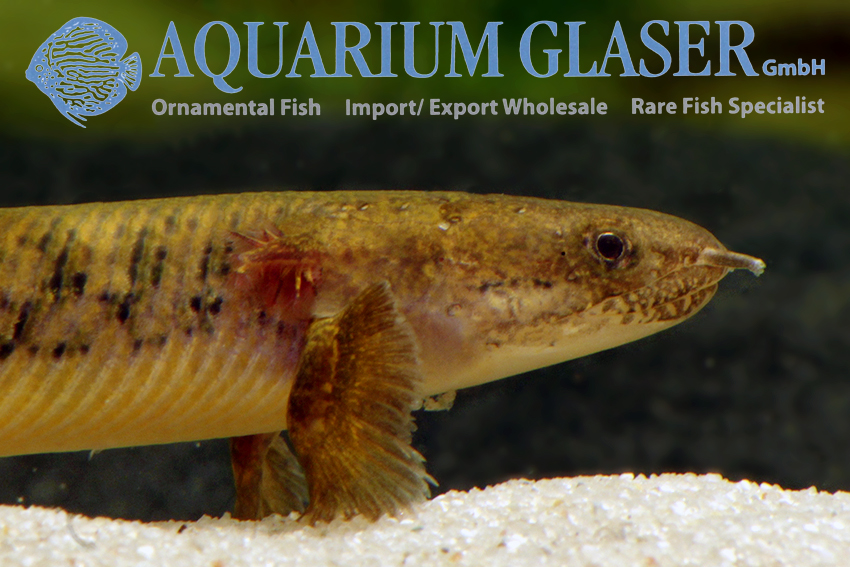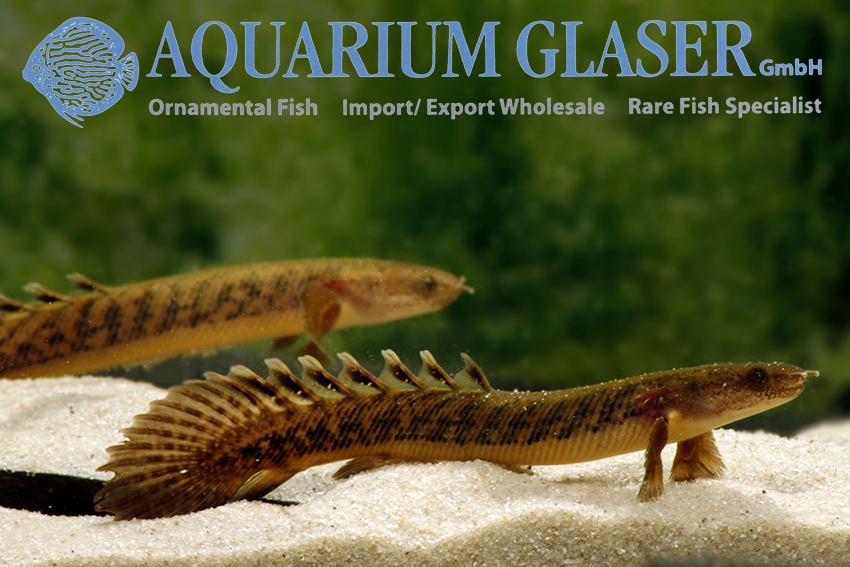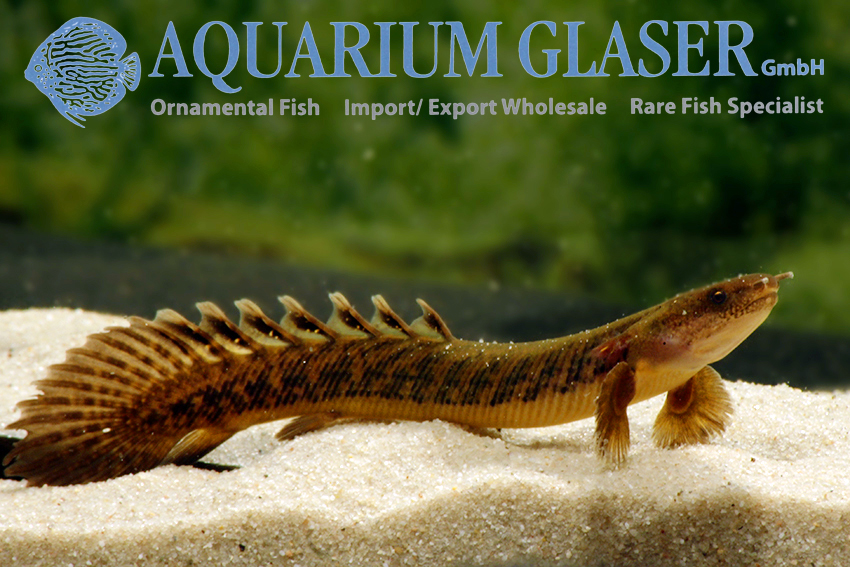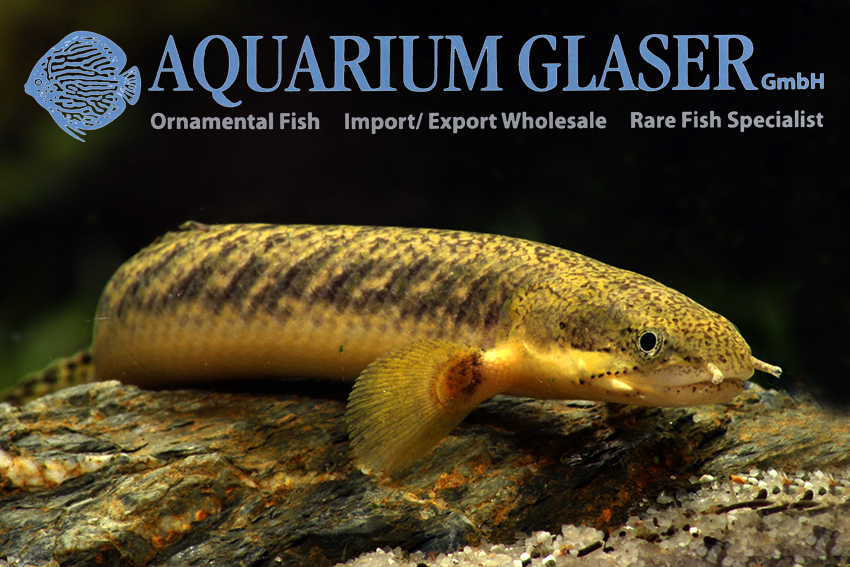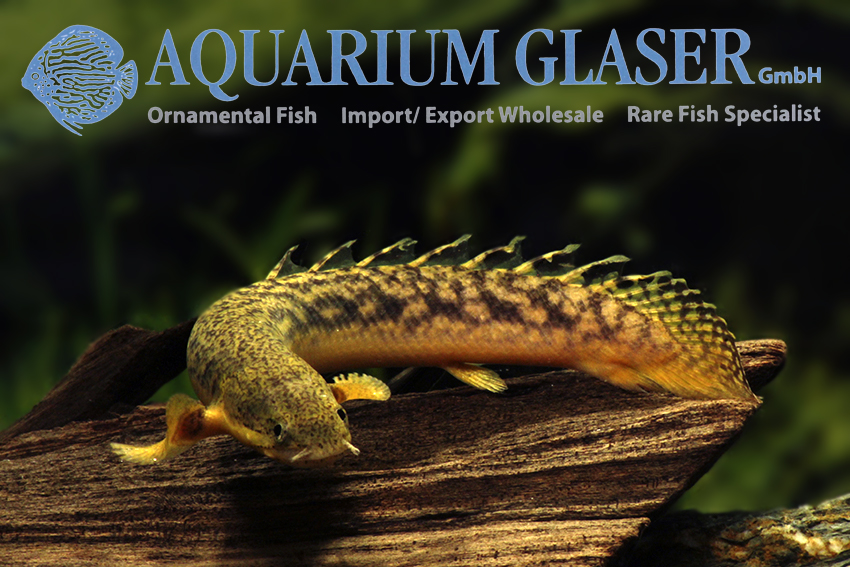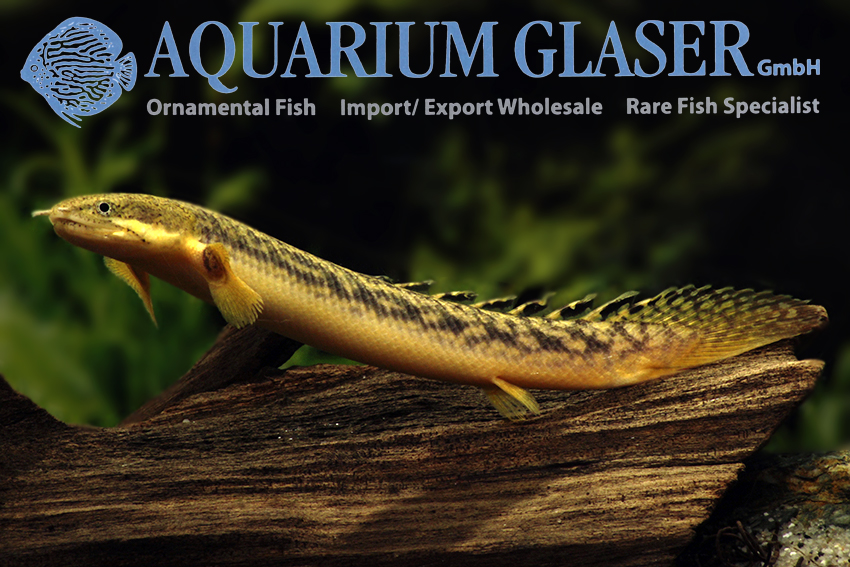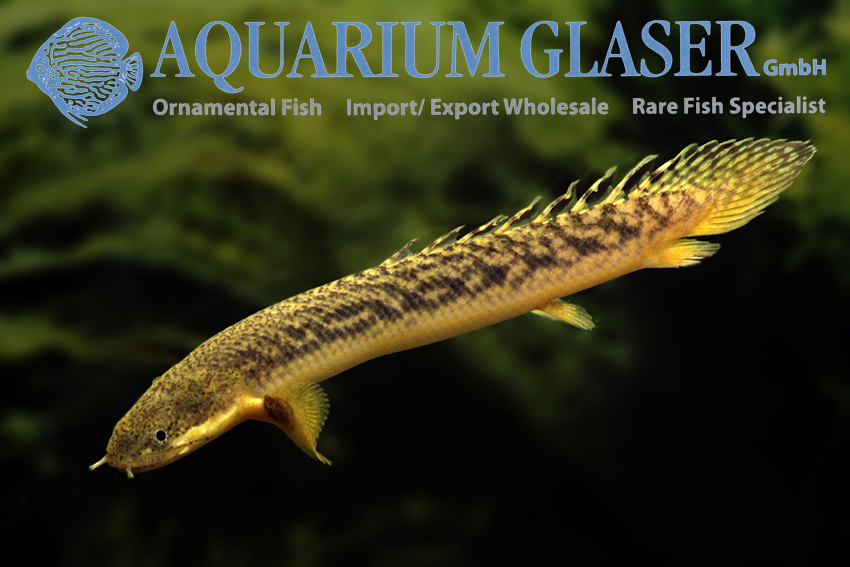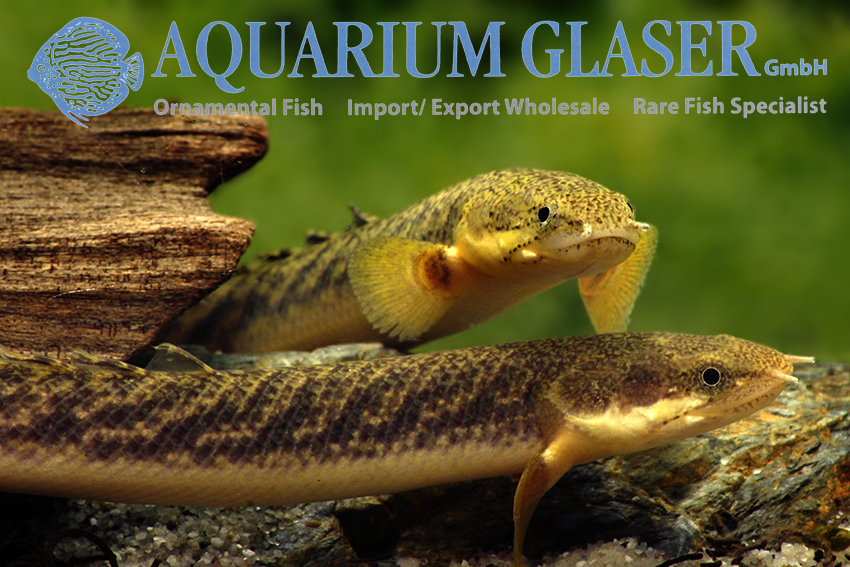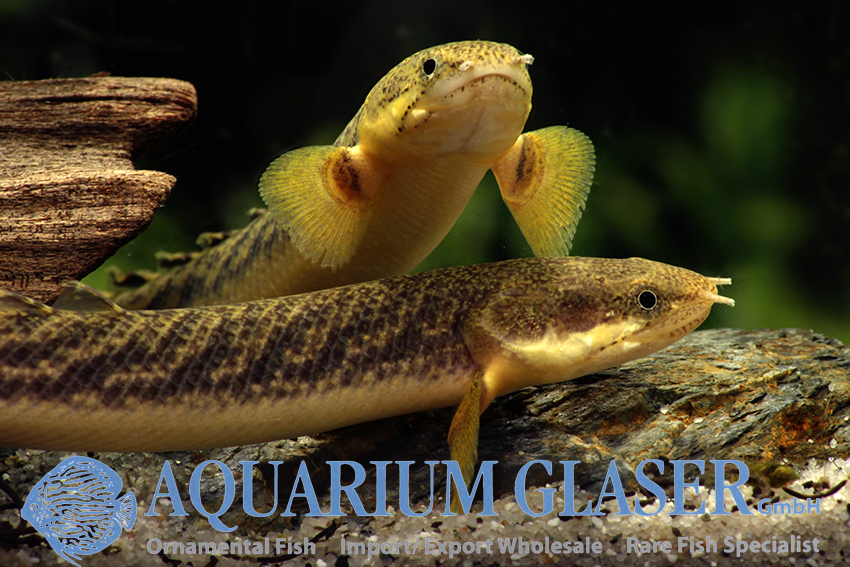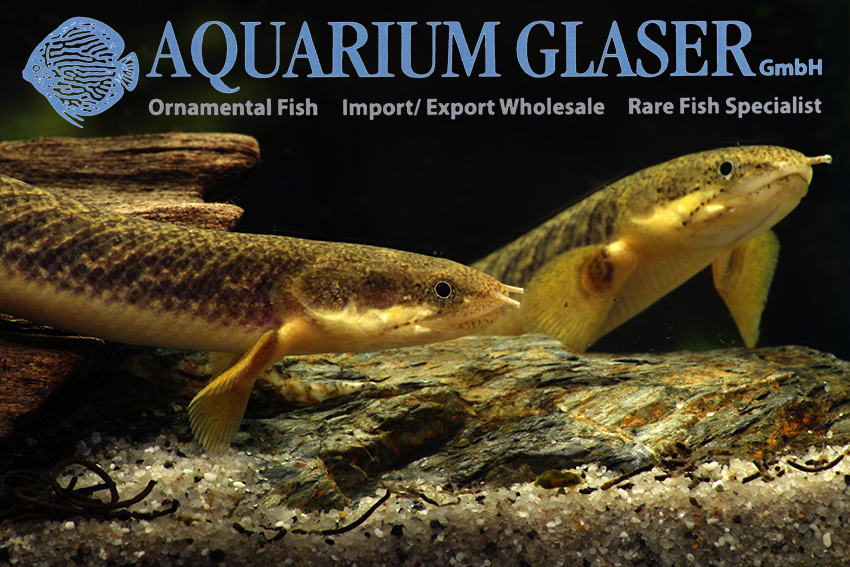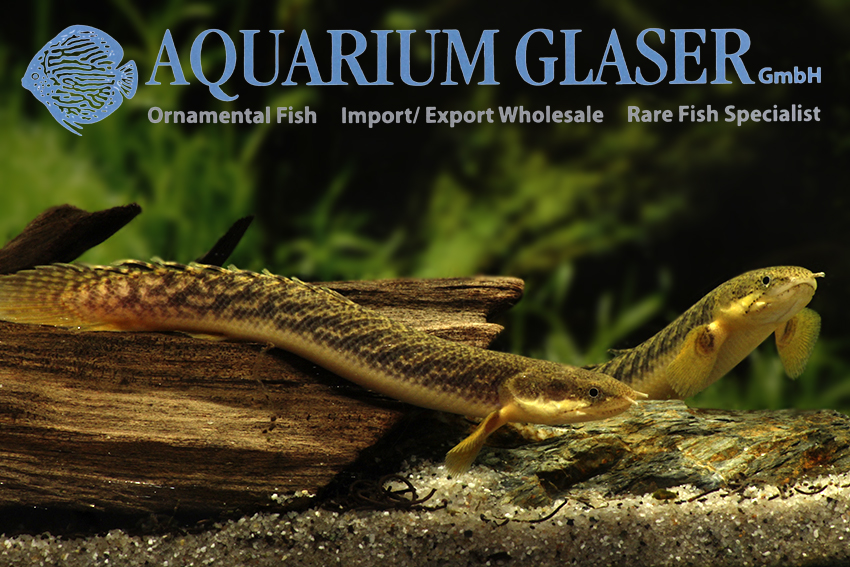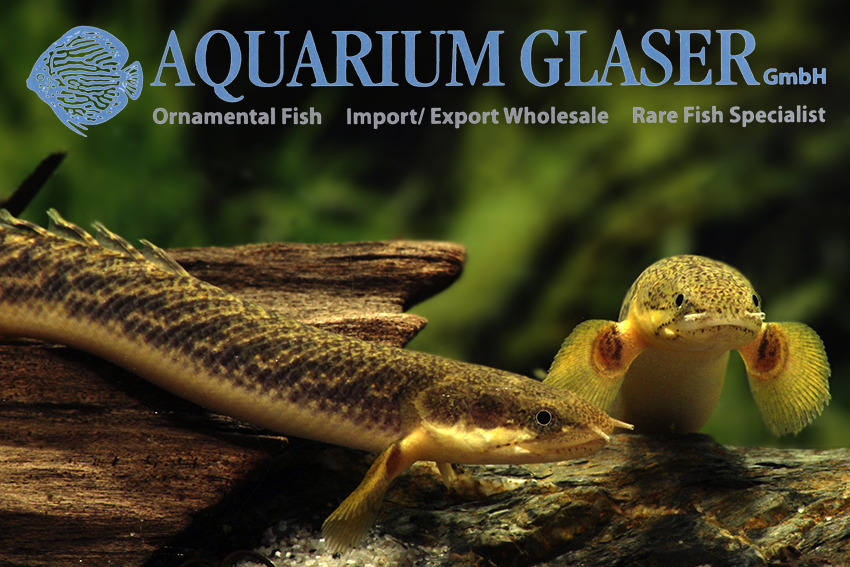Bichirs are so called living fossils. Already 60 million years old fossils were found, which can still be assigned to living species today. However, there are only 16 known species, all coming from Africa.
The last discovered and at the same time smallest species of the genus is Polypterus mokelembembe, which was described as a separate species only in 2006. Previously it was confused with P. retropinnis, in the trade it was often called P. lowei. P. mokelembembe is a resident of smaller blackwater streams in the Congo region and grows to about 25 cm in length. Males and females can be easily distinguished, as in all Polypterus species, by the differently shaped anal fin, which becomes more than twice as large in the male as in the female. During mating, this anal fin is spread out like a bowl. The male swims side by side with the female during mating, encompassing the anal fin region of the female with the splayed anal fin, ensuring fertilization of the eggs released freely into the water. Brood care is not practiced by bichirs. The larvae have external gills and thus look very similar to newt larvae. Even tiny P. mokelembembe (the small ones pictured are about 5 cm long) have the coloration typical of the species.
In the aquarium Polypterus mokelembembe are very peaceful towards all tankmates, which do not come into question as food. The animals do not like bright lighting. They eat coarse frozen and live food of all kinds, as long as it is of animal origin, also granules are gladly eaten by acclimated animals.
For our customers: the animals have code 165533 on our stocklist. Please note that we supply exclusively to wholesalers.
Lexicon: polypterus: ancient Greek, means “many-finned”, referring to the numerous individual dorsal fins. mokelembembe: name of a legendary dinosaur-like creature from the Congo, comparable to Nessie from Loch Ness. The name was chosen to refer to the high geological age of the bichirs, which already existed at the time of the dinosaurs. retropinnis: Latin, means “with fins pointing backwards”.
Suggestion of a common name: Jungle Bichir
Text & Photos: Frank Schäfer





